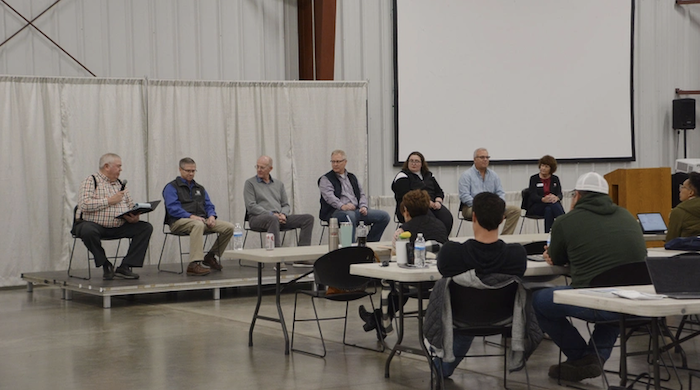Get 10, 100 or 1,000 farmers together who believe no-till and cover crops are the right way to farm. This question will come up: How can we get more people to change their attitudes about no-till and cover crops?
Is there a definitive answer? Probably not. But there are lots of opinions about why no-till and cover crops are one of the best-kept secrets in agriculture.
The following people addressed this question at a recent workshop: Ken Rulon, no-tiller, Hamilton County, Ind.; Pat Karst, vice president of Halderman Farm Management and Real Estate Services, Wabash, Ind.; Alan Weber, ag economist with the University of Missouri’s Center for Regenerative Agriculture and a farmer; Diana Rulon, Hamilton County no-tiller and liaison for the Indiana Smart Agriculture Work Group; Dan DeSutter, no-tiller, Attica, Ind.; and Brenda Sermersheim, no-tiller and ag lender in Dubois County, Ind.
Why don’t more people switch to no-till and cover crops?
Karst: Not everyone is open to it. Some people just will not do it. I believe it would be helpful to switch from talking about yields when comparing systems to talking about net income.
Ken Rulon: Changing culture with older people is nearly impossible. Some are happy with fall chiseling, and they know they can protect their income with crop insurance. If we want change, we must get to the kids. And we must tell them the truth. Be open about trade-offs between the systems. Talk about how weed control changes and how you can realize more money with no-till and cover crop systems.
Weber: Seeing is believing. You must show some people. I have told other people how I have fewer weeds by planting cereal rye or bale less hay because I graze cover crops. They act interested, but they won’t do it. They need to see it for themselves.
Diana Rulon: Many people no longer raise livestock, so more grazing opportunities will not interest everyone. Talk about the benefit that will interest them most. And Ken is right, we must get to the younger generation. Show them the economic advantages of these systems.
DeSutter: We’ve no-tilled for a long time, but we made the biggest change once I realized all three of our boys wanted to farm. We needed more income streams, and cover crops and grass-fed beef were part of the equation. That type of need motivates people.
Ken Rulon: I remember this saying: “The path to a farmer’s creativity is through his land base.” So, we must educate landowners. Show them the benefits of these systems to their land. Let them convince their tenants. If you’re a no-tiller and cover cropper, you will likely find it is beneficial to rent from educated landowners who understand why you do what you do.
Sermersheim: If you can prove to your ag lender that these systems make you a low-cost producer, they will be on your side. Encourage people to look at the bottom line when comparing systems. Doing well on the bottom line is what keeps the farm in the family.




